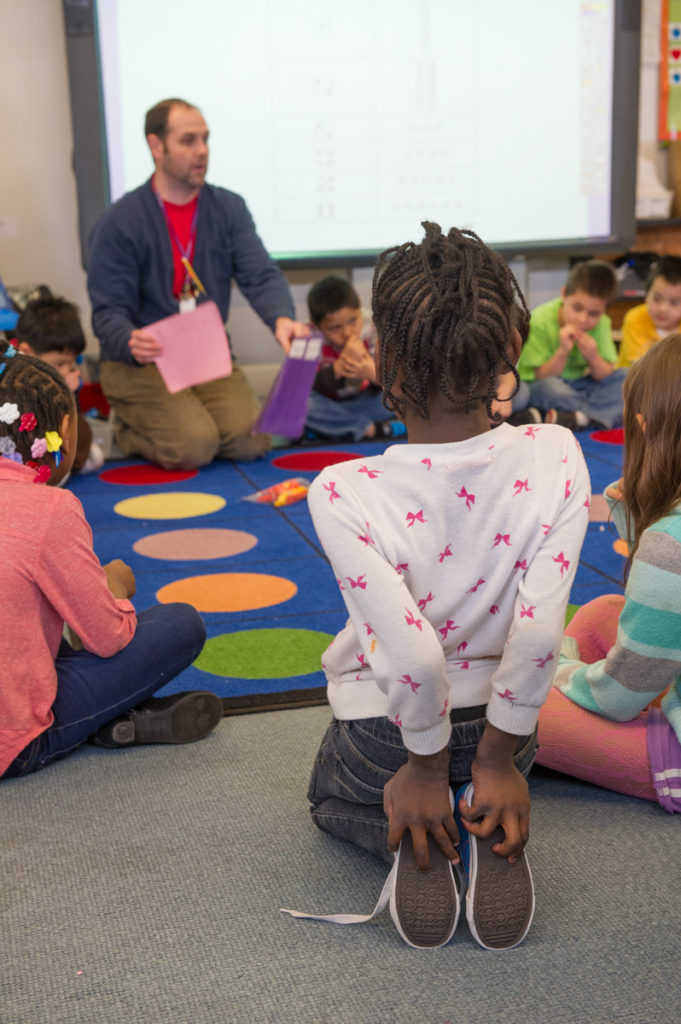
Sarah was under the classroom work table again. “Sarah, now is the time for writing. You need to come out and start your work in your writing folder.” I used my best teacher language, even though it hadn’t worked with Sarah so far. She often shut down while the rest of her classmates transitioned to a new activity, and coaxing her to join the group rarely helped.
Sarah’s difficulty with transitions was clearly impacting her ability to learn. It was time to rethink my responses. First, I reviewed the proactive strategies I already had in place and made some adjustments, such as adding a review of the day’s schedule to our class’s daily routine. Using a pocket chart that hung on the calendar board, I started spending a few minutes each day after Morning Meeting going over the plan for the day and naming expectations for each chunk of learning.
I also used Interactive Modeling to teach the students how to transition and let them practice pacing themselves. I incorporated brain and body breaks into our transitions, knowing that energizers, chants, and activities could help children refocus as we shifted gears. With these strategies in place, most of the students were able to make transitions easily. However, Sarah continued to have difficulty.
I looked carefully for patterns in Sarah’s behavior. After noticing that she had less difficulty transitioning soon after we reviewed the daily schedule, I wondered if more frequent reminders would help. I tried using more verbal cues: “In five minutes, we will stop reader’s workshop. You will need to clean up and move to the rug for our writing lesson.” These cues definitely helped Sarah . . . but I didn’t always remember to give them. I realized I needed to find a way for Sarah to get the information she needed more independently and consistently.
That’s what led me to the strategy that helped Sarah the most: an individual daily schedule. Sarah needed to get reminders throughout the day in a way that was both private and interactive. So I made her a chart that she could use to see her progress through each day. I used clip art to make small cards that represented each of our daily tasks, such as reader’s workshop, math, writer’s workshop, Morning Meeting, quiet time, lunch, and recess. I also made cards for tasks that were not as common, such as field trips, assemblies and all-school meetings. Finally, I laminated everything for durability and assembled it using hook and loop fastener.
Together, Sarah and I decided where in the classroom to hang the chart. After each task was complete, Sarah would pull off the corresponding card and put it in a small basket located next to the chart. At the end of each day, we celebrated her successes. Then, we made plans for the times that were still challenging and reassembled the chart with the cards needed for the next day. This work with the chart gave Sarah the reminders she needed to feel more secure, and gave her more control over meeting that need. I still used verbal reminders to support her, but once the routine with the schedule chart was established, her need for them declined.
This intervention was successful because it ultimately made transitions manageable for Sarah. She built competence as she moved from task to task, and day to day, while I supported her in a way that made her feel successful and respected. In this case, reflecting on my teaching, identifying patterns of behavior, and developing an individualized intervention really made the difference.
Candace Roberts is a Responsive Classroom teacher.